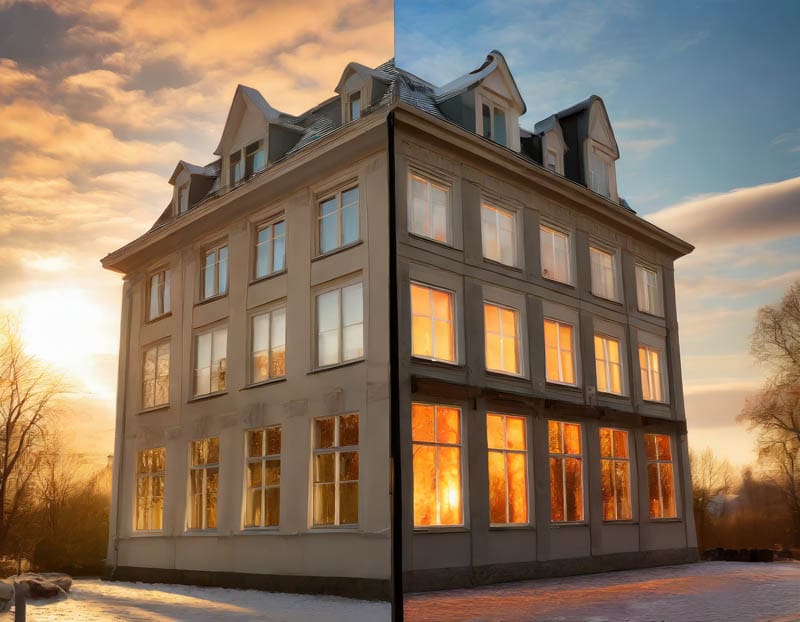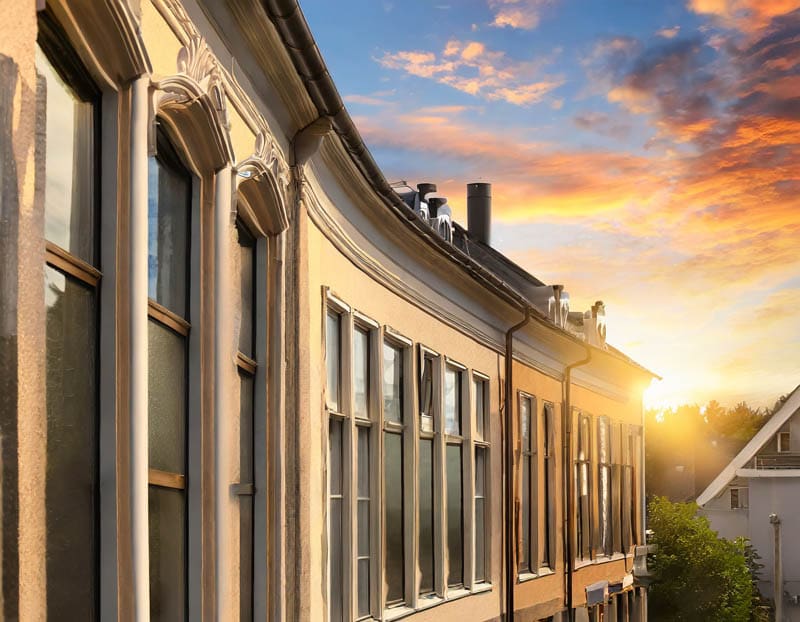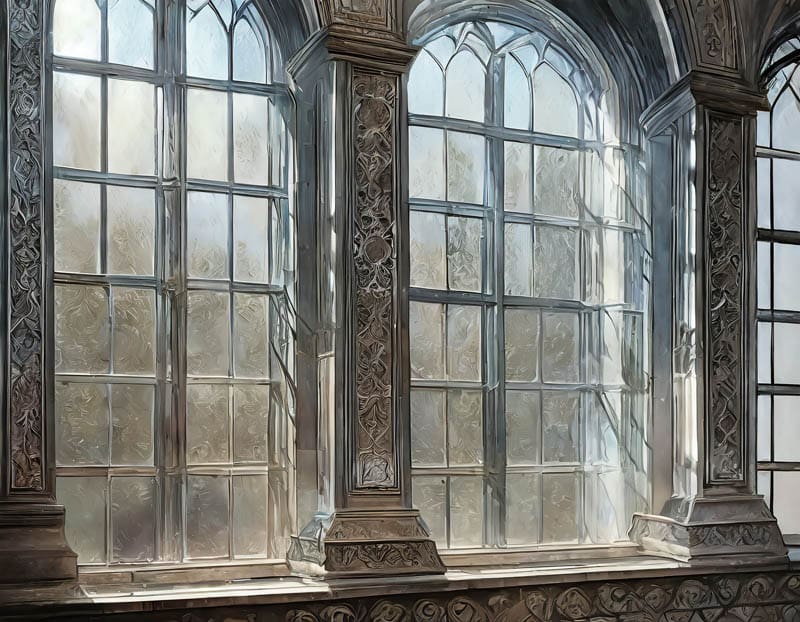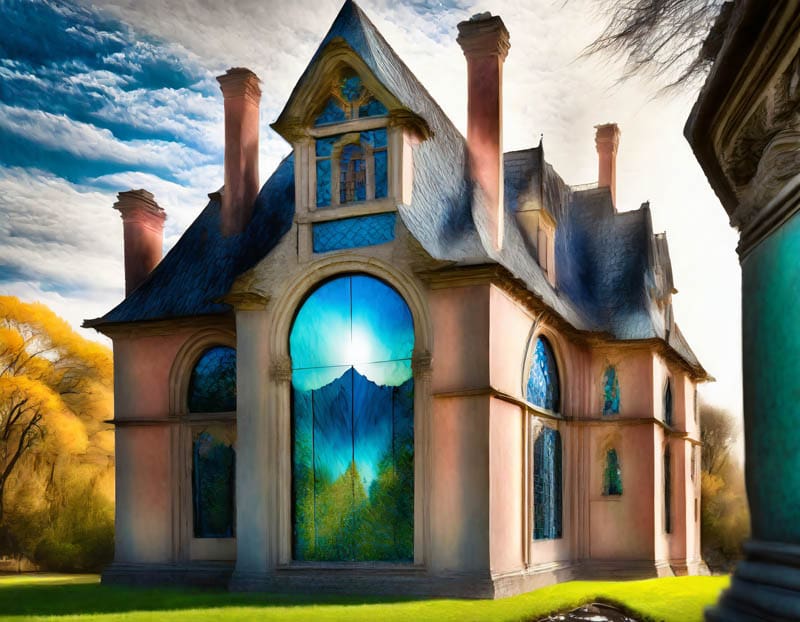
Glass Retrofit: Transforming Buildings with Enhance Heritage Glazing
Explore the transformative power of Enhance Heritage Glazing. Discover how retrofit double glazing improves energy efficiency and preserves architectural charm.
Welcome to a transformative exploration of enhancing buildings through the innovative concept of glass retrofitting. In an era where sustainable and energy-efficient solutions are paramount, the practice of retrofitting has emerged as a key player in elevating building performance. This blog post delves into the benefits of retrofit double glazing, shedding light on how it can revolutionize energy efficiency, thermal comfort, and overall sustainability.
At the forefront of this architectural evolution is the remarkable Enhance Heritage Glazing product. This cutting-edge solution is poised to redefine the way we approach building upgrades, especially in the context of historical or heritage structures. As we navigate the intricacies of retrofitting, join us on a journey to discover how Enhance Heritage Glazing seamlessly integrates aesthetics, efficiency, and environmental consciousness to usher buildings into a new era of functionality and elegance.
Section 1: Benefits of Retrofit Double Glazing
1.1 Improved Energy Efficiency
In the realm of building optimisation, retrofit double glazing stands out as a pivotal upgrade, primarily involving the replacement of existing glazing units rather than the installation of a secondary layer. This modernisation strategy brings about a noteworthy transformation in a building’s energy efficiency by addressing the limitations of traditional single-pane windows.
Enhanced Insulation through Replacement
Retrofit double glazing entails the substitution of outdated glass units with advanced, energy-efficient alternatives. The new glazing units introduce a robust thermal barrier, which plays a key role in upgrading the building’s insulation properties. Unlike conventional windows, this replacement mitigates the challenges associated with heat transfer between the interior and exterior environments.
Mitigating Thermal Bridging
The upgraded glazing acts as a shield against external temperature fluctuations, reducing the occurrence of thermal bridging—a phenomenon where heat easily conducts through a building’s structure. By minimising thermal bridging, retrofit double glazing contributes to a more efficient and balanced climate control within the building.
Improved Control Over Climate
The replacement of glazing units not only reduces heat loss but also provides occupants with enhanced control over the indoor climate. The updated thermal properties contribute to maintaining a consistent and comfortable environment, irrespective of external weather variations.
In essence, retrofit double glazing, achieved through the thoughtful replacement of glazing units, stands as a cornerstone for improving energy efficiency. As we delve deeper into this transformative process, we will unravel additional layers of benefits, exploring how it goes beyond energy efficiency to encompass aspects such as thermal comfort and noise reduction.
1.2 Enhanced Thermal Comfort
In the pursuit of a truly comfortable and inviting indoor environment, the significance of enhanced thermal comfort cannot be overstated. Retrofitting double glazing, with its focus on advanced insulation, plays a pivotal role in elevating the comfort levels within a building.
Improved Insulation for Comfort
Central to the concept of enhanced thermal comfort is the heightened insulation provided by retrofittingdouble glazing. The upgraded glazing units act as a formidable barrier, preventing the intrusion of external temperatures into the interior space. This insulation not only helps in maintaining a consistent indoor temperature but also creates a cozy and welcoming atmosphere for occupants.
Reduction of Drafts and Cold Spots
One of the notable benefits of improved insulation through retrofit double glazing is the significant reduction in drafts and cold spots within a building. Traditional windows, especially those with single glazing, are susceptible to air leaks that result in uncomfortable drafts. By replacing these with double-glazed units, the occurrence of drafts is minimised, ensuring a more stable and pleasant indoor environment.
Consistent Climate Across Spaces
Retrofit double glazing goes beyond merely reducing drafts; it contributes to the elimination of cold spots commonly associated with inefficient windows. The thermal insulation provided by the upgraded glazing creates a more uniform distribution of heat, ensuring that every corner of a room is equally comfortable.
In essence, the focus on enhanced thermal comfort through retrofit double glazing extends beyond temperature control—it encompasses the creation of a harmonious and enjoyable living or working space. As we navigate through the benefits of this transformative process, we will uncover additional layers of improvement, delving into aspects such as noise reduction and the overall aesthetic enhancement of the building.
The benefits of retrofitting double glazing are multifaceted. Retrofitting double glazing is advantageous for its ability to significantly enhance a building’s energy efficiency. Through the replacement of existing glazing units with advanced, energy-efficient alternatives, this modernisation strategy creates a robust thermal barrier, reducing heat transfer and minimising thermal bridging. The result is improved insulation, decreased energy consumption, and enhanced climate control. Additionally, retrofitting double glazing contributes to noise reduction, fostering a quieter indoor environment. This upgrade is especially beneficial for heritage structures, preserving architectural integrity while aligning with sustainable building practices. In essence, the benefits of retrofit double glazing encompass improved energy efficiency, thermal comfort, noise reduction, and the preservation of architectural heritage.

Section 2: Retrofitting Buildings for Energy Efficiency
2.1 Understanding Retrofitting
In the dynamic realm of architectural evolution, the term “retrofitting” takes centre stage as a transformative process aimed at enhancing the energy efficiency and functionality of existing buildings. This section delves into the core principles of retrofitting, elucidating its significance within the broader context of building energy efficiency.
Defining Retrofitting
Retrofitting refers to the strategic upgrade and modification of existing structures to improve their performance, energy efficiency, and overall sustainability. Unlike new constructions, retrofitting involves the integration of innovative technologies and design solutions into pre-existing buildings, breathing new life into established architectural frameworks.
Components Eligible for Upgrades
The versatility of retrofitting lies in its ability to address various components within a building that contribute to energy inefficiency. This can include but is not limited to, heating, ventilation, air conditioning (HVAC) systems, lighting, insulation, and, notably, glazing. Each of these components plays a unique role in the overall energy consumption and comfort levels of a building.
Focus on Glazing in Retrofitting
Within the spectrum of retrofitting, glazing emerges as a focal point for energy efficiency improvements. Upgrading windows and glass facades to advanced glazing solutions, such as double or triple glazing, is a strategic move to mitigate heat loss, reduce energy consumption, and enhance overall thermal comfort.
Holistic Approach to Building Performance
Understanding retrofitting requires adopting a holistic approach that recognizes the interconnectedness of various building elements. By upgrading multiple components synergistically, retrofitting aims to create a harmonious and energy-efficient building environment, aligning with contemporary sustainability standards.
As we progress through the exploration of retrofitting, the focus will shift to the integral role of glazing, shedding light on how this specific upgrade can contribute significantly to the energy efficiency and modernisation of existing buildings. Stay tuned as we unravel the intricate layers of this transformative process.
2.2 The Role of Double Glazing
As we navigate the intricate landscape of retrofitting for enhanced energy efficiency, the spotlight turns to the pivotal role played by double glazing. This section delves into the mechanisms by which double glazing becomes a linchpin for optimizing a building’s energy performance, unravelling the principles behind the insulation provided by multiple glass layers.
Explaining the Contribution to Energy Efficiency
At the heart of the energy-efficient building revolution lies the transformative impact of double glazing. Unlike traditional single-pane windows, double glazing involves the incorporation of two glass layers separated by a space filled with insulating gas. This seemingly simple alteration has profound implications for a building’s overall energy consumption.
Principles Behind Insulation
The insulation prowess of double glazing stems from the creation of a thermal barrier between the interior and exterior environments. This barrier impedes the transfer of heat, preventing it from escaping during colder months and shielding against external heat infiltration in warmer periods. The trapped insulating gas, often argon or krypton, further enhances the barrier effect, minimising the conduction of heat through the glass layers.
By creating this thermal buffer, double glazing significantly reduces heat loss, thus mitigating the need for constant heating or cooling. This not only contributes to a more stable and comfortable indoor climate but also translates into substantial energy savings.
Beyond Thermal Insulation
The advantages of double glazing extend beyond thermal insulation. The additional glass layer acts as a deterrent to external noise, contributing to a quieter and more peaceful indoor environment—an aspect we explored in the previous section. This dual functionality makes double glazing a multifaceted solution in the pursuit of comprehensive building improvements.
In essence, understanding the role of double glazing unveils its transformative impact on a building’s energy efficiency. As we continue our exploration into retrofitting, we’ll delve deeper into sustainable solutions and how they integrate seamlessly into the broader goal of creating more energy-efficient and comfortable living and working spaces.
Retrofitting buildings for improved energy efficiency involves implementing strategic upgrades to existing structures, focusing on enhancing their sustainability and reducing energy consumption. This process includes the integration of advanced technologies and materials to improve insulation, upgrade HVAC systems, and optimise lighting. In the context of windows and facades, retrofitting often includes the installation of energy-efficient glazing solutions, such as double, triple or vacuum glazing, low-emissivity coatings, and insulated frames. The goal is to modernise the building’s components, making them more environmentally friendly and aligning with contemporary energy efficiency standards. Retrofitting not only lowers energy costs but also contributes to a greener, more sustainable built environment while preserving the historical integrity of listed buildings.
2.3 Sustainable Solutions
In an era where environmental consciousness is paramount, the pursuit of sustainable solutions has become an integral aspect of retrofitting for enhanced building performance. This section delves into the environmental benefits of retrofitting, emphasizing the reduction in carbon footprint, and explores how the Enhance Heritage Glazing aligns seamlessly with sustainable building practices.
Reducing Carbon Footprint through Retrofitting
One of the hallmark achievements of retrofitting is its contribution to a more sustainable future by significantly reducing the carbon footprint of existing buildings. Upgrading outdated components, implementing energy-efficient technologies, and enhancing insulation collectively result in a substantial decrease in energy consumption. By curbing the need for excessive heating, cooling, and lighting, retrofitting plays a pivotal role in minimizing greenhouse gas emissions associated with building operations.
Aligning with Sustainable Building Practices
The Enhance Heritage Glazing product stands as a beacon within the realm of sustainable building practices. Crafted with a commitment to both aesthetic preservation and environmental stewardship, this glazing solution seamlessly integrates into retrofitting projects seeking a harmonious balance between heritage conservation and modern sustainability.
Energy Efficiency and Material Selection
Enhance Heritage Glazing not only contributes to improved energy efficiency but also underscores the importance of responsible material selection. By incorporating advanced glazing technologies, this product ensures that the energy invested in its production is outweighed by the energy savings it facilitates during its operational life.
Preserving Aesthetics Responsibly
A distinctive feature of Enhance Heritage Glazing is its ability to preserve the aesthetic integrity of historical or heritage structures while meeting contemporary environmental standards. This delicate balance between preservation and sustainability aligns perfectly with the ethos of responsible retrofitting, where the goal is to enhance building performance without compromising the cultural or historical significance of the structure.
As we delve further into the transformative potential of retrofitting, we’ll explore how sustainable solutions, exemplified by products like Enhance Heritage Glazing, can redefine the landscape of architectural conservation and ecological responsibility. Stay tuned for a deeper understanding of how these innovations pave the way for a more sustainable and resilient built environment.

Section 3: Retrofitting Double Glazing in Heritage Structures
3.1 Preserving Heritage with Advanced Glazing Solutions
In the intricate world of retrofitting for energy efficiency within heritage structures, the necessity of advanced glazing solutions becomes paramount. Focused on replicating the charm of single glazing while delivering contemporary performance, particularly in conservation areas and listed buildings, this section explores why Enhance Heritage Glazing stands out as an ideal choice for retrofitting.
Replicating Single Glazing with Modern Performance
Preserving the aesthetic authenticity of listed buildings often involves replicating the original single glazing. However, the challenge lies in achieving modern-day performance standards without compromising historical integrity. Enhance Heritage Glazing addresses this challenge head-on, seamlessly mimicking the appearance of traditional single glazing while providing advanced insulation and energy efficiency.
Mitigating the Double Image Effect
Standard double glazing can often introduce a visual artifact known as the double image effect, detracting from the clarity and authenticity of heritage structures. Enhance Heritage Glazing employs advanced technologies to mitigate this effect, ensuring that the views from within and outside the building remain true to their historical essence.
Enhance’s Retrofitting Prowess
Retrofitting heritage structures demands a solution that respects original frames, preserves historical character, and minimises intrusion. Enhance Heritage Glazing is tailor-made for such scenarios, featuring a design that lacks plugs and getters, ensuring a seamless retrofit into original frames without compromising their integrity. This unique attribute streamlines the retrofitting process, making Enhance an ideal choice for those looking to enhance energy performance while maintaining the historical fabric of their buildings.
Preserving Heritage, Advancing Sustainability
In essence, the necessity of heritage glazing, particularly exemplified by Enhance Heritage Glazing, lies in its ability to combine the replication of single glazing with the delivery of modern-day performance. By reducing the double image effect and offering a retrofitting solution that is both sensitive and efficient, Enhance Heritage Glazing ensures that the rich legacy of historical architecture not only endures but thrives in the face of contemporary sustainability challenges.
Improving the efficiency of listed buildings involves strategic measures, and glazing plays a pivotal role. Retrofitting double glazing with advanced solutions, like Enhance Heritage Glazing, significantly enhances energy efficiency. By upgrading windows with features such as double glazing, low-emissivity coatings, and insulated frames, buildings experience reduced heat loss, improved thermal comfort, and lower energy consumption. This targeted approach optimises the building envelope, contributing to a more sustainable and energy-efficient structure.
Section 4: Improving Overall Building Efficiency
4.1 Comprehensive Building Solutions
In the pursuit of unparalleled building efficiency, a holistic approach becomes imperative. This section underscores the need for a comprehensive strategy that encompasses various facets of energy conservation and optimization. We delve into the pivotal role of glazing within this holistic framework, emphasizing its synergy with other energy-efficient measures.
Holistic Efficiency Enhancement
Improving the overall efficiency of a building requires more than isolated upgrades; it necessitates a holistic approach that considers the interconnectedness of different components. Comprehensive building solutions address not only energy consumption but also factors like water usage, waste management, and indoor air quality. This approach ensures a harmonious and sustainable environment for occupants.
The Role of Glazing in Energy Efficiency
Within the spectrum of comprehensive solutions, glazing emerges as a crucial player. Windows and glass facades play a dual role—offering visual connectivity to the external environment while serving as potential energy efficiency assets. Retrofitting double glazing, such as Enhance Heritage Glazing, becomes integral in reducing heat loss, enhancing insulation, and mitigating the reliance on artificial lighting and HVAC systems.
Synergy with Other Energy-Efficient Measures
The efficiency of a building is maximized when various components work in synergy. Energy-efficient lighting, smart HVAC systems, and sustainable materials are integral parts of this equation. Glazing, when strategically integrated with these measures, contributes to a balanced and energy-conscious ecosystem within the building. The result is not only reduced energy consumption but also an elevated quality of life for occupants.
4.2 Technological Advancements
In the ever-evolving landscape of technological innovation, emerging solutions redefine the possibilities for building efficiency. This section explores the latest advancements in technology and how innovative glazing solutions, exemplified by Enhance Heritage Glazing, seamlessly integrate into the modern technological landscape.
Technological Frontiers in Building Efficiency
The technological advancements shaping building efficiency extend beyond traditional measures. Smart sensors, building automation systems, and data analytics offer unprecedented opportunities to optimize energy usage, monitor performance, and adapt in real-time. Embracing these technologies is pivotal for staying at the forefront of sustainability.
Enhance Heritage Glazing in the Tech Landscape
In the vanguard of innovative glazing solutions, Enhance Heritage Glazing aligns seamlessly with modern technological trends. Beyond its energy-efficient attributes, this product embraces the potential of smart technologies. From dynamic glass that adjusts transparency based on external conditions to integrated sensors that enhance occupant comfort, Enhance Heritage Glazing exemplifies the marriage of traditional aesthetics with cutting-edge efficiency.
The Future Landscape of Building Efficiency
As we explore the convergence of technological advancements and building efficiency, it becomes evident that the future is dynamic and interconnected. Innovative glazing solutions, driven by technological progress, stand as catalysts in this transformation. Enhance Heritage Glazing embodies the evolution toward a future where efficiency is not just a goal but a dynamic and evolving journey, shaping sustainable and intelligent buildings for generations to come.

Conclusion: Shaping the Future of Sustainable Architecture
In the journey through the transformative realm of glass retrofitting and building efficiency, we’ve explored the nuanced dynamics of Enhance Heritage Glazing and its pivotal role in advancing the principles of sustainability, energy efficiency, and historical preservation.
From the replication of single glazing with modern-day performance to mitigating the double image effect, Enhance Heritage Glazing stands as a beacon of innovation. Its unique ability to retrofit seamlessly into original frames, devoid of plugs and getters, ensures the preservation of architectural heritage while ushering in a new era of energy-conscious living.
As we envision the future of architecture, the call to action is clear—embrace the possibilities that Enhance Heritage Glazing presents. Whether you’re contemplating a retrofit for a historical gem, exploring ways to improve overall building efficiency, or simply seeking to reduce your carbon footprint, Enhance Heritage Glazing is not just a solution; it’s a commitment to a sustainable, comfortable, and visually captivating future.
Elevate Your Space with Enhance Heritage Glazing
1. Preserve Heritage, Embrace Efficiency
Enhance Heritage Glazing seamlessly marries the preservation of architectural heritage with contemporary energy efficiency. Elevate your space by preserving the past while embracing a sustainable future.
2. Explore retrofitting of Double Glazing Possibilities
If you have a historical or heritage structure that deserves a modern touch without compromising its authenticity, explore the retrofitting possibilities with Enhance Heritage Glazing. Witness the seamless integration of advanced glazing technologies into your cherished architectural gem.
3. Advance Building Efficiency
Whether you’re planning a retrofit or envisioning a new construction project, Enhance Heritage Glazing is a key player in advancing overall building efficiency. Join the movement toward a more energy-conscious and environmentally friendly architectural landscape.
The future of architecture is shaped by choices we make today. Choose Enhance Heritage Glazing—a choice that combines aesthetics, energy efficiency, and historical preservation in a harmonious symphony of innovation. Elevate your space, enhance your legacy, and contribute to a sustainable and vibrant architectural future.